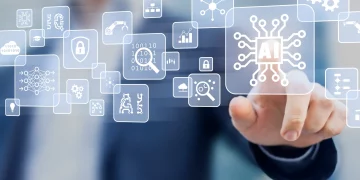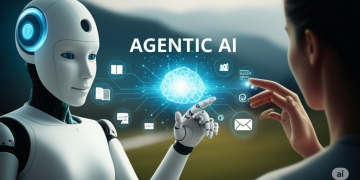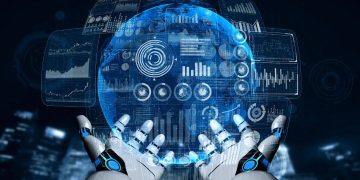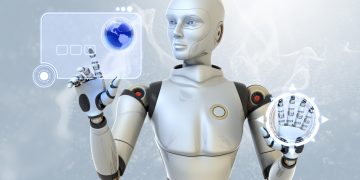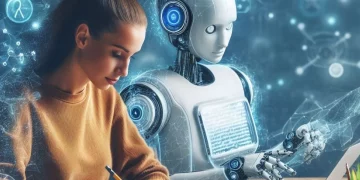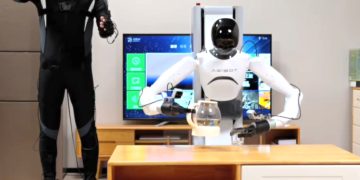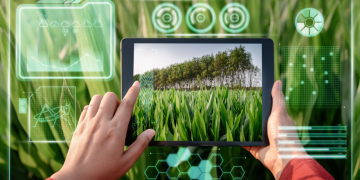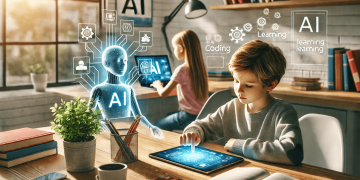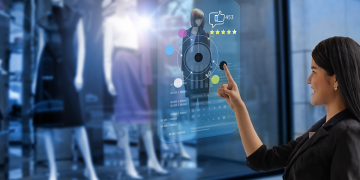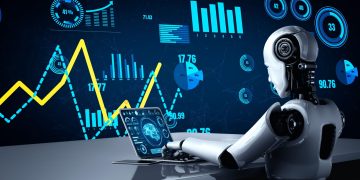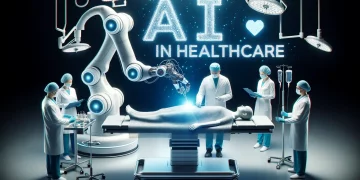Artificial intelligence (AI) has moved rapidly from research labs into the fabric of our daily lives, reshaping how we work, communicate, and solve problems. As we enter a new era of global digital transformation, AI is not only continuing to evolve—it is becoming the foundation for a wide spectrum of technological innovation. But what exactly will define this next chapter? What kinds of advances are expected to lead scientific progress, economic disruption, and societal change in the years ahead?
To answer these questions, it is crucial to consider the perspectives of the experts—leading AI researchers, pioneers in machine learning, industry technologists, and policy advisors. Their collective insights highlight a set of transformative innovations that are expected to dominate the field over the next decade.
1. General-Purpose AI Systems: The Rise of Adaptive Intelligence
One of the most significant shifts predicted by experts is the emergence of AI systems with general-purpose capabilities. These models, often called “foundation models,” are trained on massive datasets and are capable of adapting across a wide variety of domains—language, vision, audio, code, and beyond.
Unlike earlier narrow AI tools, these systems do not need to be built for a specific task; they can be fine-tuned for applications in healthcare, education, law, science, or entertainment with relatively little additional training. Researchers like Demis Hassabis (DeepMind) and Ilya Sutskever (OpenAI) argue that we are moving closer to models that display early forms of general intelligence—able to reason, learn, and operate in unfamiliar domains with minimal human guidance.
In practical terms, general-purpose AI will support the creation of cross-functional digital assistants, AI-driven decision-making platforms for enterprises, and intelligent systems capable of solving open-ended problems.
2. Multimodal Learning and Interaction
Top AI researchers increasingly point to multimodal AI—systems that can process and generate information across multiple data types—as a dominant innovation trajectory. These systems combine language, vision, audio, video, and sensor data in unified frameworks. Models such as GPT-4o and Google’s Gemini are early examples of this shift.
Dr. Fei-Fei Li of Stanford University notes that intelligence in humans is not isolated to one modality, and neither should it be for machines. AI that can see, listen, speak, and reason simultaneously will unlock entirely new applications, including real-time translation, advanced virtual agents, and highly interactive educational tools.
Multimodal systems will also play a major role in autonomous vehicles, robotics, and augmented reality, where environmental context must be interpreted in complex and dynamic settings.
3. Causal Reasoning and Abstract Thought
While today’s AI systems are impressive in their ability to identify patterns and generate outputs based on statistical correlations, they are largely unable to perform causal reasoning—that is, understanding cause and effect. Experts such as Yoshua Bengio and Stuart Russell have identified causal inference and abstract reasoning as necessary for achieving more trustworthy, adaptable, and human-aligned intelligence.
Future AI systems will be expected to go beyond recognizing what is likely to happen, and instead answer deeper questions like why something is happening or what might occur under different circumstances. This will dramatically improve fields such as medical diagnostics, scientific modeling, and policy simulation.
Research is now focusing on integrating neural networks with symbolic logic and structured knowledge representations. These hybrid models aim to blend the flexibility of deep learning with the transparency and generalizability of traditional rule-based systems.
4. Embodied AI and Autonomous Agents
AI is not just remaining in the digital realm—it is being embedded into physical systems. Embodied AI refers to intelligent agents that interact with the physical world: robots, drones, self-driving vehicles, and smart appliances.
Yann LeCun, Chief AI Scientist at Meta, has long advocated for developing systems that learn through physical experience. He argues that intelligence without grounding in the physical world is fundamentally limited. In the next decade, we will likely see more advanced forms of robots capable of learning through observation and trial-and-error—much like humans.
Applications will range from logistics and warehouse automation to elder care, personal robotics, and search-and-rescue missions. These systems will need to understand space, adapt to uncertainty, and make real-time decisions in complex environments.
5. AI in Scientific Discovery
AI is becoming an indispensable tool for advancing scientific research. From drug development to climate modeling and material science, AI systems are already helping scientists process complex datasets, model interactions, and identify new solutions faster than traditional methods allow.
DeepMind’s AlphaFold project, which accurately predicted the structures of proteins, is a clear illustration of this potential. Experts now anticipate that similar AI-driven tools will play a role in discovering new medicines, optimizing energy systems, and even advancing fundamental physics.
Over the next decade, AI systems are expected to move from assisting scientific research to actively driving it. By generating hypotheses, designing experiments, and conducting simulations, AI could become a true partner in discovery.
6. Self-Supervised and Continual Learning
Traditional AI models require vast amounts of labeled data, which is costly and time-consuming to generate. In response, researchers are developing self-supervised learning methods—models that can learn patterns from raw, unlabelled data—and continual learning techniques, which allow systems to evolve and adapt over time without forgetting previous knowledge.
Experts like Geoffrey Hinton and others suggest that future breakthroughs in this area will enable AI systems to learn more efficiently, much like children do—by observing the world, forming representations, and adapting continuously.
This will make AI more accessible to smaller organizations and enable deployment in low-data environments such as agriculture, early education, or emerging markets.
7. Safe, Aligned, and Ethical AI Development
As AI systems become more autonomous and embedded in critical decision-making processes, safety and alignment with human values are emerging as core challenges. Leaders such as Stuart Russell and Timnit Gebru argue that the future of AI depends not just on technical capabilities, but on whether we can build systems that reflect societal norms, avoid harmful biases, and remain under human oversight.
The next decade will likely see continued innovation in value alignment, explainability, adversarial robustness, and fairness auditing. These efforts will not only be technical but regulatory, with global efforts to shape how AI is governed across borders.
Regulatory frameworks like the EU AI Act and evolving guidelines from the OECD and UN agencies are beginning to reflect expert input, prioritizing transparency, accountability, and public trust.

8. AI Personalization and Human-Centered Design
Another major theme is the personalization of AI systems. Experts foresee a future in which AI tools are deeply attuned to individual users’ needs, preferences, cultural context, and emotional states.
Personalized AI will revolutionize education, healthcare, mental wellness, and productivity by delivering tailored experiences at scale. For example, AI tutors could adapt to a student’s learning style in real time, or healthcare assistants could monitor and respond to patient conditions with sensitivity and nuance.
Human-centered AI design will focus not just on utility but on empathy, accessibility, and inclusion—making AI not only effective but socially acceptable and emotionally intelligent.
9. Open-Source AI and Decentralized Innovation
A number of experts highlight the growing importance of open-source development in democratizing AI. Organizations such as Hugging Face and EleutherAI have shown that innovation need not be centralized in a few corporate labs.
Open-source AI allows smaller institutions, universities, and individual researchers to contribute to, audit, and build upon shared models. This fosters a more transparent, inclusive, and globally distributed AI ecosystem.
Looking forward, more innovation is expected to come from the convergence of open data, community-driven research, and cloud-based training infrastructure—especially in regions traditionally underrepresented in the AI landscape.
10. AI and Quantum Computing Convergence
Though still early-stage, the intersection of quantum computing and AI is a potential breakthrough frontier. Quantum algorithms could accelerate the training of large models, solve optimization problems that are intractable for classical machines, and simulate physical systems with high fidelity.
Researchers at institutions like Caltech and Google Quantum AI Labs believe that within the next ten years, we may see the first practical applications of quantum-enhanced AI in domains such as cryptography, material science, and machine learning optimization.
This convergence could redefine computational limits, pushing the boundaries of what AI can process, predict, and model.
Conclusion: A Decade of Transformation Through AI
The experts agree on one thing: the next decade will be defined by AI innovations that are general, multimodal, embodied, safe, and ethically grounded. Whether through smarter machines, personalized tools, or scientific discovery, AI will not only influence the direction of technological progress—it will help shape the fabric of society itself.
What we build—and how we choose to build it—will determine not just the pace of progress, but its purpose. These expert-led innovations offer a framework for a future where AI does not merely optimize what we already do, but enables us to reimagine what is possible.





